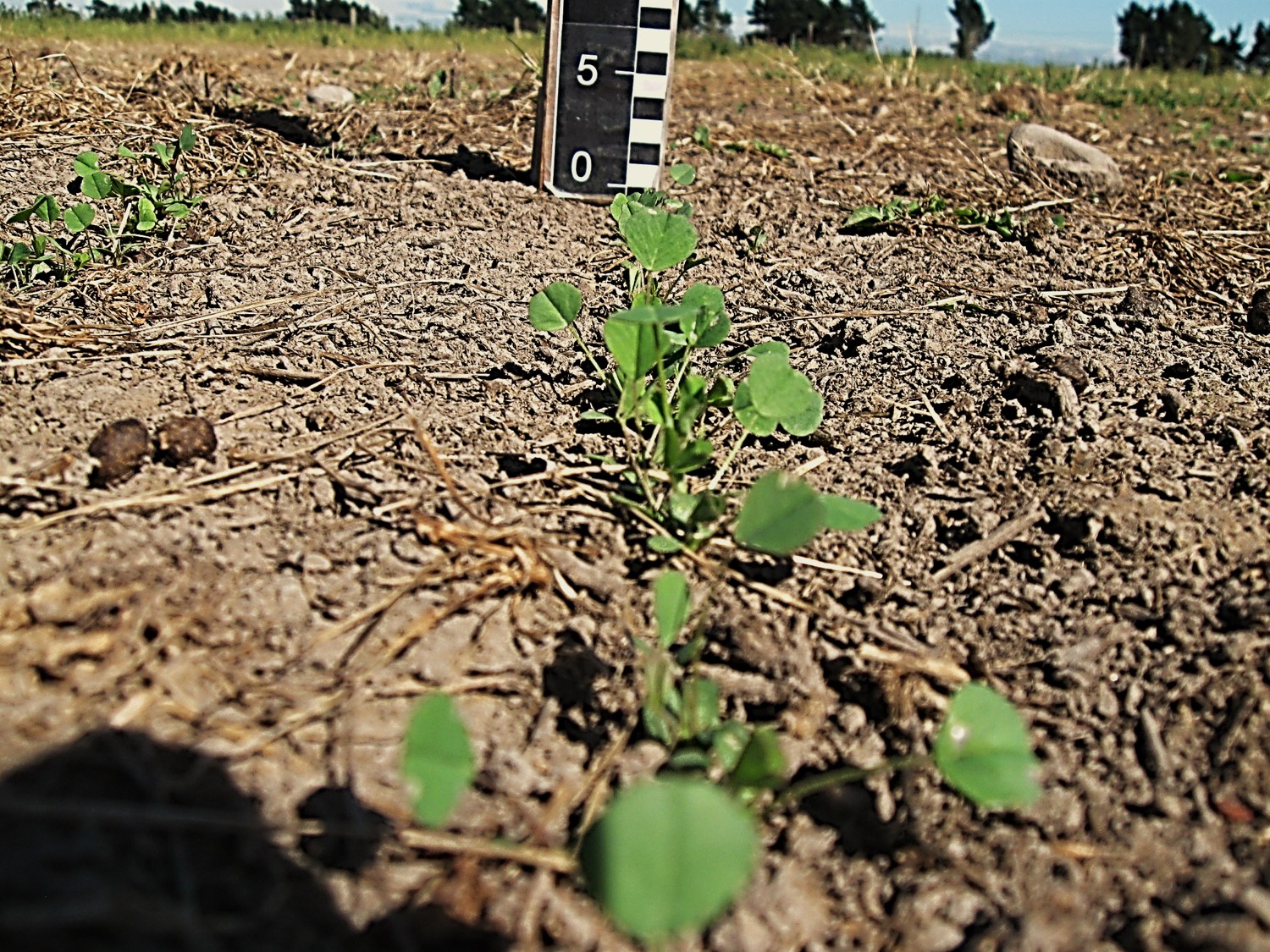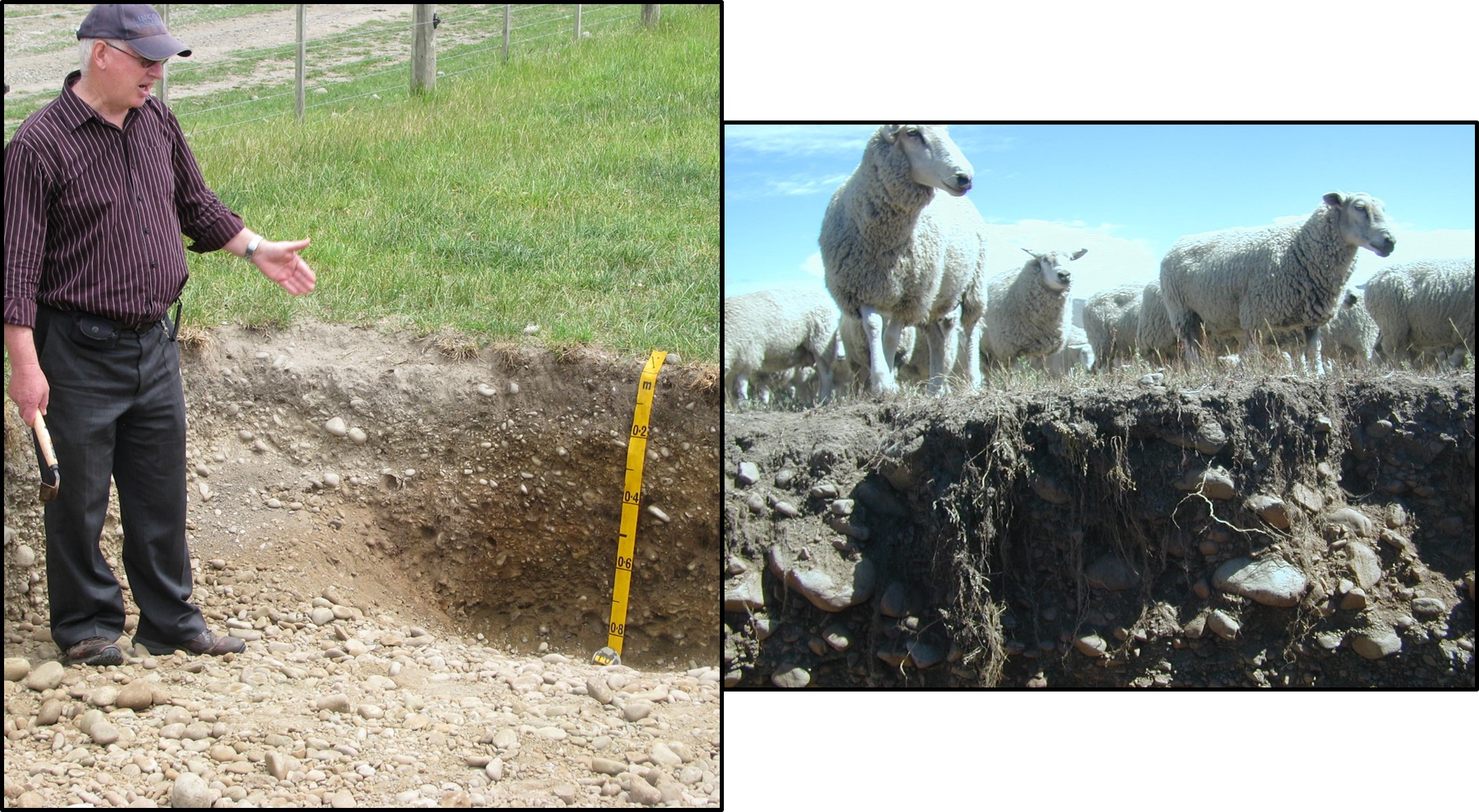Post prepared by Prof. Moot, summer scholar Rebekah Brosnahan and Anna Mills
Many dryland regions of New Zealand experience heavy winter rainfall that can cause periodic waterlogging in paddocks. Lucerne is more sensitive than ryegrass under flooding and this is sometimes cited as a reason not to sow lucerne in a paddock. However, after a severe winter in Marlborough in 2010, ‘Bonavaree’ farm found new lucerne seedlings emerging in a paddock that had drowned out in their wet winter. The new seedlings grew and Doug Avery drilled lucerne back into similarly affected patches of the stand without encountering any issues.

Similarly, in the winter of 2013, Ashley Dene (and many areas of eastern New Zealand) experienced above average rainfall in June 2013 which caused damage to many crops and pastures. At Ashley Dene, the worst damage was in our Beef+LambNZ funded Pastoral 21 experiment on the Home Block. The experiment is in its fifth year and is where we are evaluating different spring grazing management strategies for direct grazed lucerne. The Home Block is known to have a rising water table and, in what was considered to be a 1 in 30 year event, parts of the experiment became submerged. The photo below shows flooding in June 2013 was exceptionally bad with the lucerne in the shallow hollows remaining under water for close to three months. Being waterlogged for such an extended period understandably killed the lucerne plants as the water prevented the plants ability to respire, effectively suffocating the plant.

The photo below shows one of the damaged areas of the lucerne paddock on 30 October 2013 after the water table fell. Due to the loss of plants we had to fence off the damaged areas to remove them from the grazing experiment. This effectively reduced the area available for grazing stock and we lowered our stocking rates to account for this.

The drowned out lucerne area quickly regenerated in spring with weed species including Poa annua, Shepherd’s purse and sorrel. These weeds compromised the growth of surviving lucerne plants around the margins of the damaged area. As the affected lucerne stand was only 5-years old we decided to overdrill lucerne back into the damaged areas to rejuvenate the mid-age stand. This was to see if under these circumstances a lucerne-lucerne rotation would work to salvage the paddock. Prior to overdrilling on the 30th of October the weeds in the affected areas were sprayed out with 4L/ha of glyphosate to reduce competition to the lucerne seedlings as they germinated. That afternoon the drowned areas were reseeded with 4kg/ha of ‘Stamina 5’ lucerne. There were a few issues with trash building up on the drill but this is unlikely to be an issue with a more appropriate commercial drill type (e.g. triple disc), but our selection of machinery was unfortunately limited by the smaller size of our paddocks.

After overdrilling the lucerne seedlings emerged rapidly. The photo below was taken about 2 weeks later on 15 Nov 2013. After sowing no further weed control was applied but a winter spray is planned for May/June depending on the amount of weed seedlings which germinate.

The first grazing occurred on the 17 Jan 2014 which was about 3 months after oversowing. The photo shows grazing occurred at the recommended stage for a new stand – spring sown lucerne was allowed to begin flowering before stock grazed. It also shows fathen (Chenopodium album) regrowth which will disappear after this first year (because it will be shaded out by the lucerne as the canopy closes). The re-sowing of the flood damage areas in this mid-age lucerne stand has been successful and we will now be able to continue our experiment at full scale in future years.

And finally… an update
The most recent numbers are in on the Lincoln University Dryland Pastures blog. Since starting in Aug 2012 we’ve had over 15000 individual page hits from more than 6500 visitors – and that’s only from those of you in NZ. We would also like to say hi to those of your visiting from overseas and thought at this point we’d mention that sometimes it’s not the absolute rainfall in a region that leads to NZ’s drought prone dryland systems. We have relatively young soils in some areas which can be both shallow and stony, particularly those formed on floodplains, so sometimes it’s the inability to store the rain that falls for later growth rather than the total amount of rain. Here’s a couple of examples:
